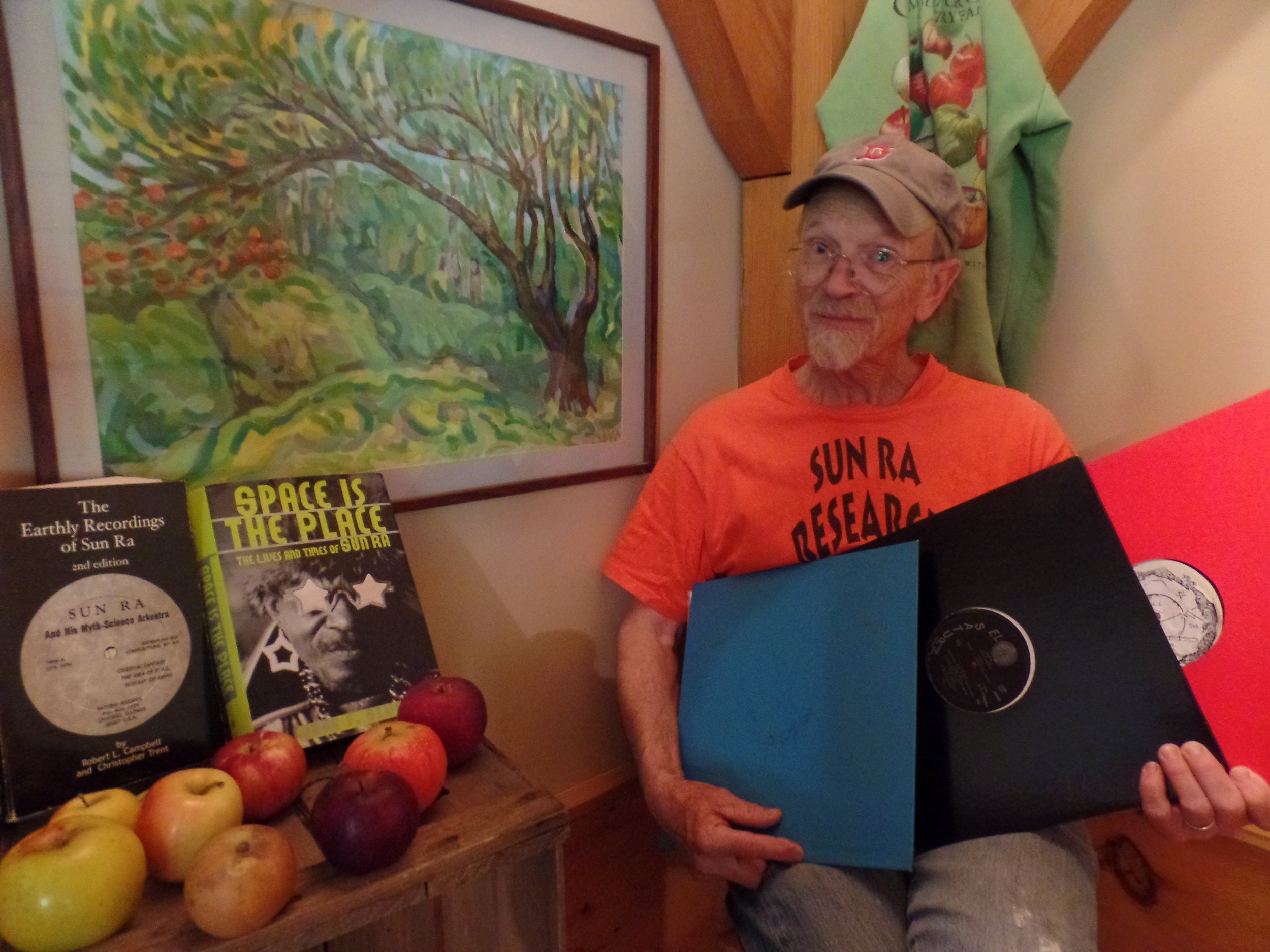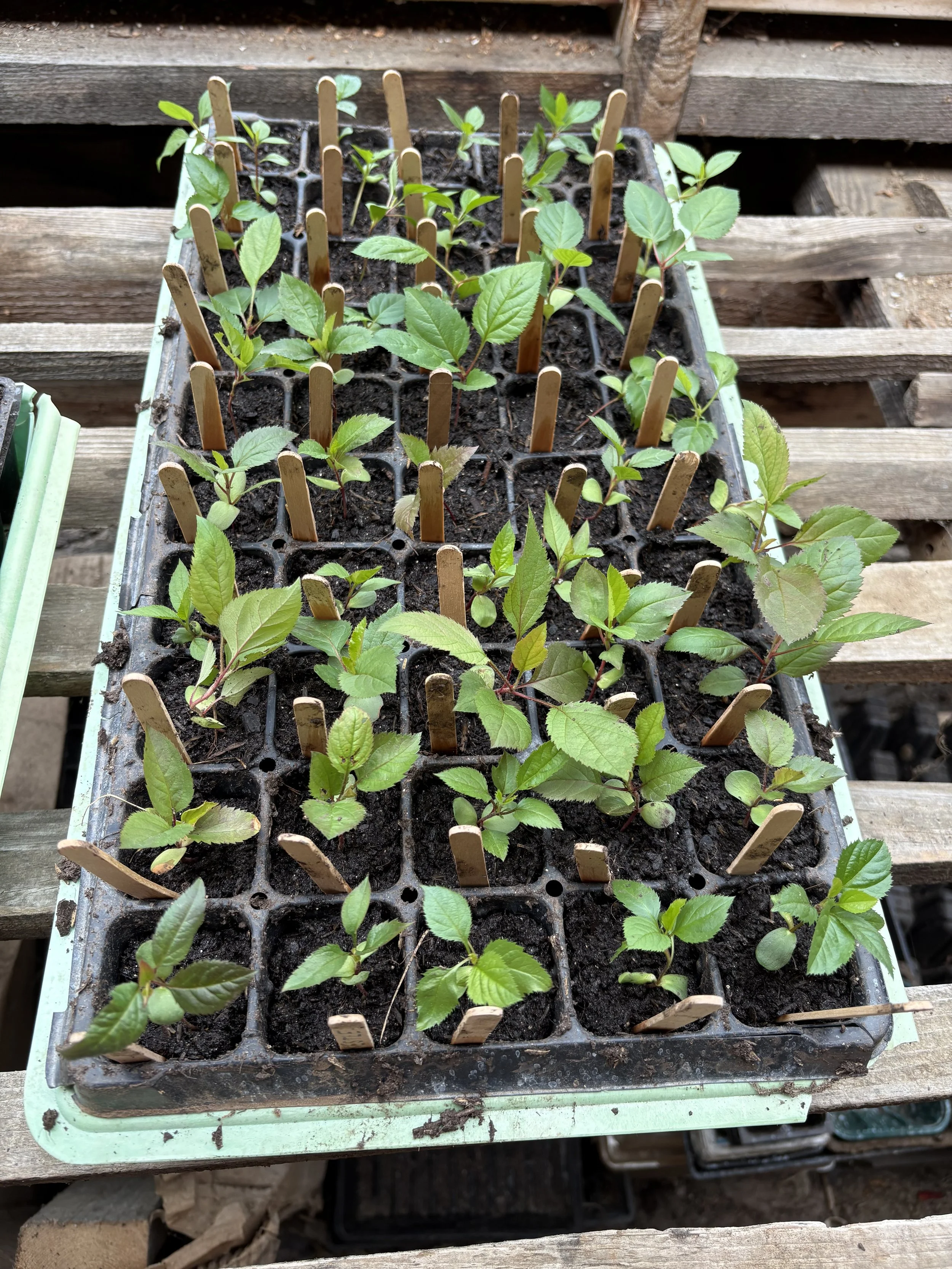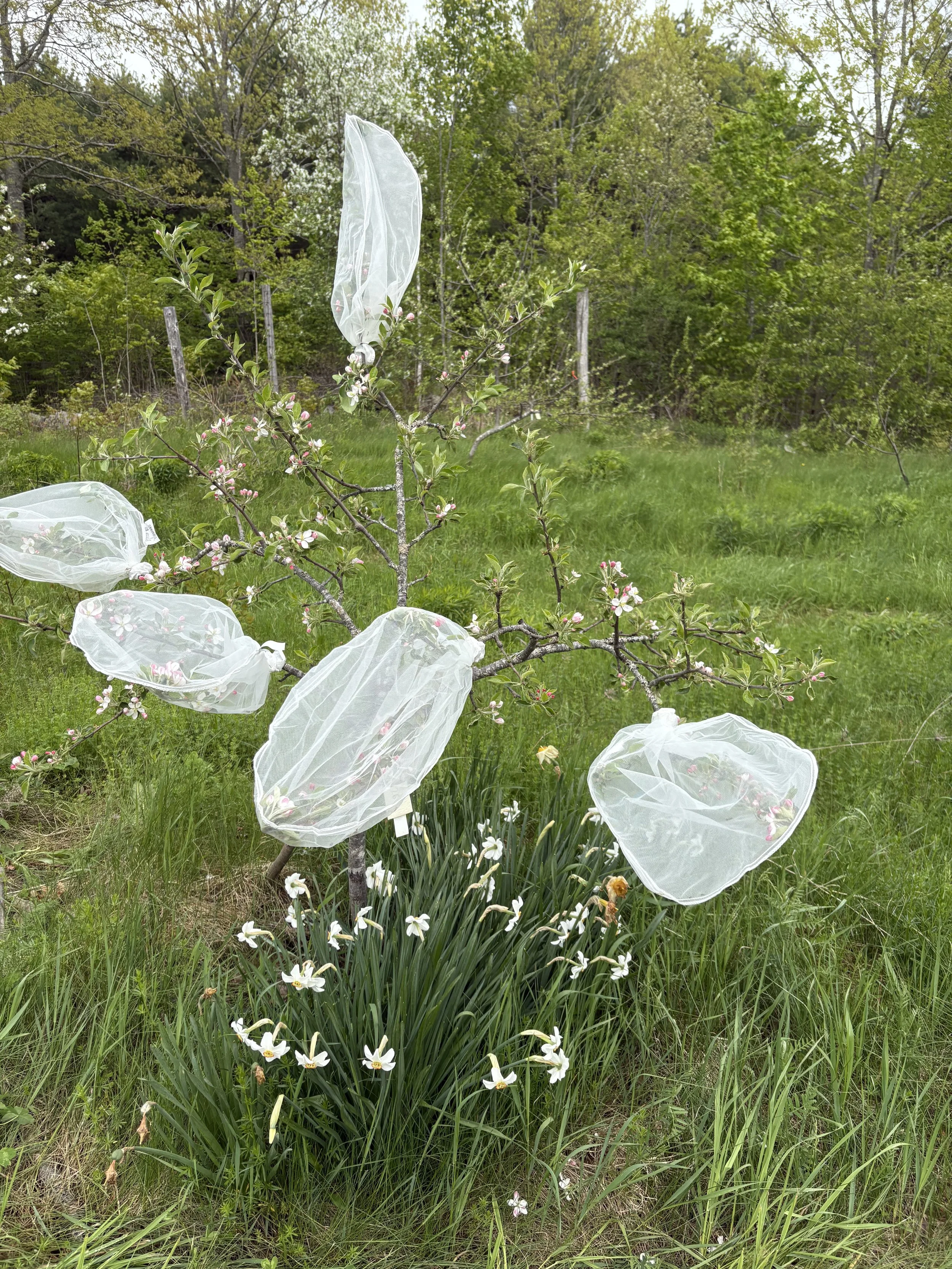Today in the orchard
Atheline Wilbur, June 2, 2025.
The temperature was 35F at 6 AM for the second morning in a row. That’s cutting it close but caused no problems. It was Jack Frost’s last gasp for the spring I suspect. We’ll see him back in three months. He’s heading off to pester the Tasmanians. We had a busy day in the orchards today. Up at the Nursery we planted two long rows of potatoes in the spot where we dug the nursery trees earlier this spring. Later Skylar and I transplanted Tansy (Tanacetum vulgare) from the blueberry terrace to the BRC orchard where it can spread freely and form its own happy colony. Some people call it “invasive”, but when the Tansy’s in bloom, the flowers are host to a multitude of insects. We cultivated around the grapes that are beginning to grow up nearby maple trees (Acer rubrum) and fertilized them with compost. Meanwhile Cammy planted out corn seedlings in the big garden. At the end of the day Laura and I sprayed the plums, cherries and peaches with Surround and Regalia. Regalia is a biofungicide made of Knotweed (!) that works by helping the plant to boost its own resistance to whatever annoys it next. After completing the spraying, I took a few minutes to fill up the tractor bucket with firewood from down at the south end of the orchard and contemplate the universe before heading home. The air, the breeze, the sky, the orchard: it was all pretty close to perfect. Maybe it was.
I guess I haven’t yet said goodbye to lilacs for the year. Maybe tomorrow. For now I’ll tell you about one other favorite. I’ve never liked the color pink too much but occasionally there comes along a pink that is hard not to adore. To my eye, Atheline Wilbur is the epitome of that pink. I love it.




















